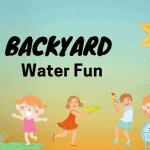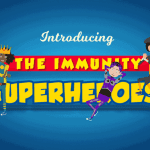

Everyone remembers the fun of making Easter baskets as a kid. Then there was the sense of accomplishment when you were finished. You may even still have pictures of them as adults. Making Easter baskets is still one of the great things for kids to do at Easter. These days, however, you want to make a sustainable and/or eco-friendly Easter Basket.
Here are some tips on making an Eco-Friendly and/or Sustainable Easter Basket:
- Use Eco-Friendly Baskets,
- Use An Alternative to Plastic Grass,
- If using fake eggs, it is preferable to use something besides plastic,
- Use Food Safe Egg Dyes on eggs you plan to eat,
- Blow-out real eggs so you can safely eat the eggs,
- Fill eggs with eco-friendly Things, and/or
- Swap Eggs for Prizes Instead of Filling Eggs.
For additional information on each topic, read below.
Use of Eco-Friendly Baskets
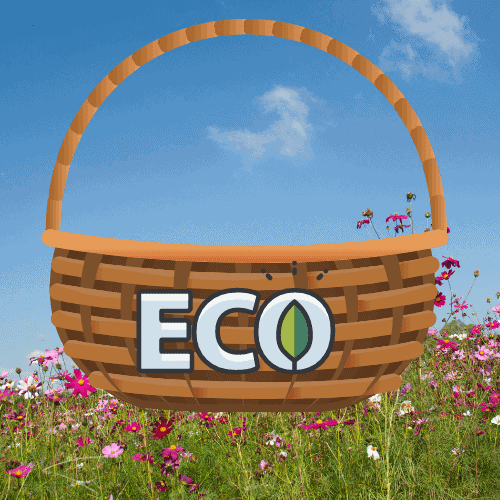
Eco-friendly baskets may sound expensive. In fact, they can be even more affordable than unsustainable options, including plastic baskets. Here are some tips on how to protect the environment and your budget.
Reuse your old baskets
If you’ve already purchased Easter baskets and they’re still in good condition, just keep using them.
Look in thrift stores/dollar stores
Remember that new to you doesn’t have to mean brand new. Thrift stores can be great places to find items you can repurpose as Easter baskets. Alternatively, try online in places like eBay, Gumtree, Craigslist, and Facebook marketplace. If none of these work for you, then try dollar stores.
In all these places, the secret to budget-friendly success is to look for items that can be used as Easter baskets. These are likely to be priced much lower than items that are sold as Easter baskets. Basically, avoid the seasonal mark-up.
Repurpose household items
Look around your home (and garden if you have one). You probably have lots of items you could repurpose as Easter baskets. You can re-purpose old household in some of the following ways:
- Decorate an old basket, straw bag, jute tote, trug, or plant pot, or
- Use a toy as a basket, for example, a truck, or
- Repurpose a pajama case as a plushie basket.
Make your own
If none of these work, then you probably have everything you need to make your own. If you don’t, then you should be able to get the materials fairly easily. At a basic level, all you need is strong cardboard. Cut out a base and sides and then decorate them.
Round shapes can be complicated. Ovals, however, are very easy. Just cut a rectangular base and two long sides. That will give the necessary strength. Then use paper, regular card, or cardstock for the rounded edges. If you’re adding a handle, make sure to attach it to the long sides. Ideally, put it all the way round to the base.
Summary of Options for Eco Friendly or Sustainable Easter Baskets
The options for a Sustainable or eco-friendly Easter Basket are summarized below:
- Re-use Your old baskets.
- Look in thrift stores or dollar stores for baskets.
- Repurporse household items such as a straw bag or tote.
- Make your own.
Alternatives to Plastic Grass
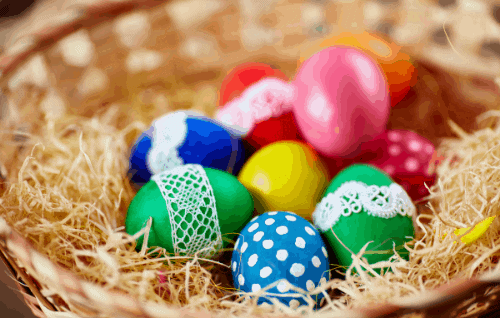
Green paper and green wool are both simple and affordable alternatives to plastic grass. If necessary, fill the bottom of your container with soft material (in any color). Then just put the “grass” around the edges. Basically, use it where it will be seen.
Alternatively, just forget the idea of grass and go for hay or, more practically, straw. This is widely sold as animal bedding. Getting a whole pack of it will probably be much more than you need. That said, it is very affordable and there are plenty of places that will likely be more than happy to take the leftovers off your hands.
Eco-Friendly Options for Fake Eggs
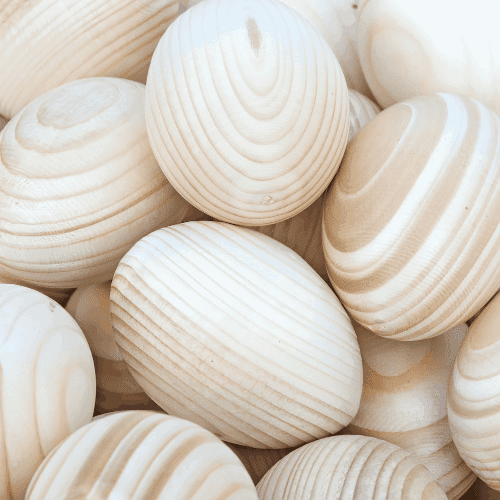
To avoid cooking and mess in the kitchen, you may want to use fake Easter Eggs. If so, we are also providing some sustainable options for fake eggs. .
Durable Plastic Eggs
Some advise against the use of plastic eggs. It is because some of the less expensive plastic Easter eggs can’t be re-used. Therefore, they are not perceived as re-usable and they will fill up the landfill.
In addition, plastic is not a sustainable material. Since plastic eggs are not a sustainable material and may not be re-usable, you may want to use another material for fake Easter eggs. Reference below for some options.
In addition, If plastic eggs can really be re-used then this is a viable alternative. Otherwise, please consider one of the following other options.
Avoid Use of Paper-Mache
Similarly, papier-mache itself may be sustainable. Unfortunately, the only practical way to make papier-mache Easter eggs involves using plastic, typically plastic balloons. Therefore, this solution is not ideal.
Use Wooden Easter eggs
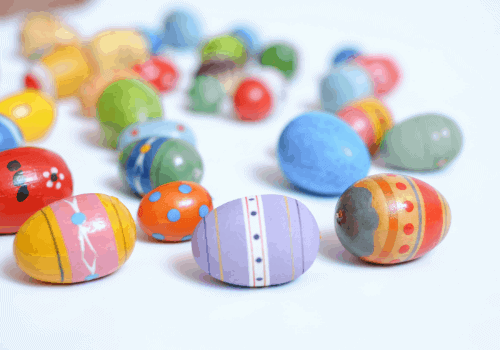
These are a bit challenging to make at home but widely available in stores. You can get them ready-decorated. With kids, however, it’s a whole lot more fun to buy the hollow ones with a blank surface. Then your kids can paint them however they like. For the following year, give them a fresh coat of white paint to start with and paint them again.
Make Fabric Easter eggs
There are a couple of approaches to doing this. Firstly, you can just get some felt, cut out pairs of egg shapes, and sew them together (wrong sides in). Leave a small gap for the stuffing. Turn them the right way round, stuff them and sew up the gap. If you want to take this a step further, have the kids decorate them before you sew them up.
Secondly, you can make pom pom Easter eggs. Just make pom poms in the regular way but use an egg shape instead of a regular circle.
Eco-Friendly Options for Real Easter Eggs
You may not mind the kitchen mess and love the tradition of real Easter Eggs. Here are some eco–friendly options for using real eggs in your kid’s eco-friendly Easter basket.
- Safely Dye real eggs.
- Blow-out real eggs.
Safely Dye Real Eggs
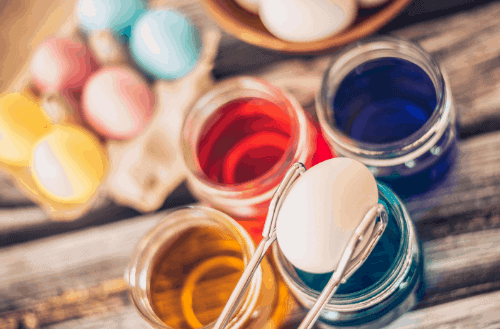
If you want to use real eggs, then use food-based dyes so they can still be eaten. This is great fun. It’s also an opportunity for a science lesson. Eggs can look amazing just dyed in a single color. You can, however, take it a step further and use stencils and stamps to create more intricate designs. Once you’ve had your fun, the eggs can be eaten safely.
Blow Out Real Eggs
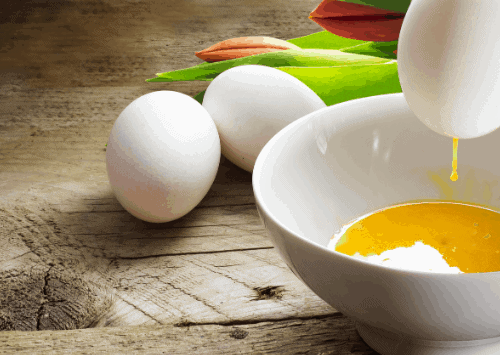
Basically, the adults do the hard bit, blowing out the egg. Then the contents of the eggs go into food and the kids paint the shells. This approach is often better for older kids as the shells do need to be handled quite gently.
When Easter is over, the shells can be composted. Alternatively, they can be varnished and stored for future years. An egg box is usually the best place for them.
Use Eco-Friendly Egg Fillers
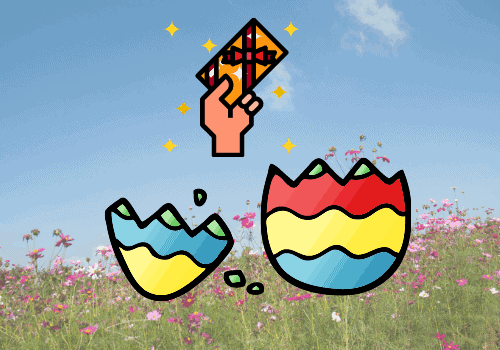
Again, avoid plastic as much as you can, especially plastic toys. Candy is often a sustainable option. It isn’t, however, a healthy one. Here are some other ideas for egg fillers.
- IOUs/vouchers – For example, an hour’s extra TV (not on a school night),
- Tickets for outings,
- Money,
- Healthy treats e.g. soft fruits,
- Seeds – to plant, you may have to put them in smaller packets,
- Playdoh,
- Small toys, e.g. marbles, matchbox cars, wooden spinning tops, finger puppets,
- Hair accessories (e.g. bows), jewelry,
- Badges/pins, and
- Toiletries e.g lip balm, hand sanitizer.
Swap Eggs For Prizes Instead of Filling Eggs
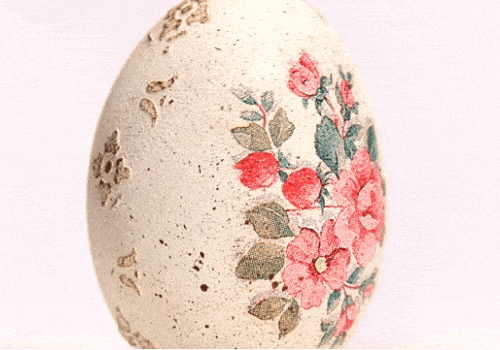
Instead of filling the Eggs, consider swapping eggs for prizes. Here are some examples:
- Provide prizes depending upon the amount of eggs they bring back.
- All kids receive a participation prize when they return the eggs.
- Special prizes for the kid that finds the special egg(s).
Wrap-Up
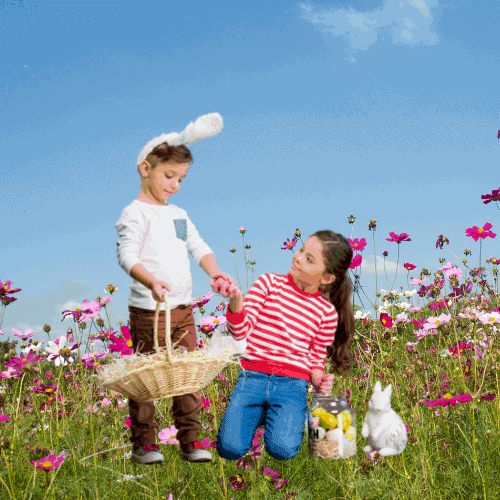
The Easter Holiday is a fun time of year for kids. They get excited at the thought of Easter Egg Hunts and Easter Treats. Kids can have fun with minimal impact to the environment by making eco-friendly/ sustainable Easter Basket using the tips provided above. Enjoy!!
More Easter Information
- If your kid is afraid of the Easter Bunny, you should read, What to Do If Your Kid Is Scared of the Easter Bunny.
- If you are looking for things for your kids to do online, you should view Online Events for Kids.






